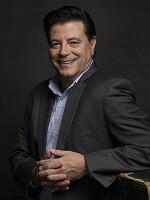Correction: An earlier version of this story incorrectly said that district administrators in Stonington did not respond to a request for comment. In fact, Stonington High School Principal Mark Friese responded to WNPR in an email before the story was published, and he provided his account of the day’s events, which is now included.
Stonington High School junior Caroline Morehouse was excited when she learned that her school would allow students to walkout of class to protest gun violence in a nationwide day of action on March 14. She'd be standing in solidarity with students from Parkland, Florida, who only a month earlier had lost 17 classmates in yet another school shooting.
Morehouse got to work right away on her speech.
“First of all, I did want to bring up the statistics about gun violence in our nation,” she said. “I wanted that to be a unifying message and not a divisive message, but I was not able to talk about that today."
Not able to talk about it, she said, because school administrators took any mention of guns and gun violence out of her speech. District leaders chose instead to focus on school safety, and student speeches were vetted by administrators to make sure any mention of guns were redacted, she said.
But in an email, Stonington High School principal Mark Friese provided texts from the speeches given on March 14th, and the words guns and gun violence were used in some of them, like this excerpt from the first speech given at the event.
“The 17 that lost their lives on February 14th, died because of the gun violence entrenched into modern society. This call for action is asking for these people to be honored, for their lives not to have been lost in vain. We cannot allow this harrowing tale to define this period in history, but rather our response to it. We are calling for a change, and those of you with us today have joined this movement.”
The school stayed away from the word "walkout." The March 14 event at Stonington High School was called a "Step Out For Safety."
After Morehouse's speech was rejected, she chose not to participate in the event. She believes the district's handling of walkout day had unintentional political consequences.
“I think that they were trying to keep it neutral,” Morehouse said, “but I really feel like they were playing to the people who would not want gun control. It's not like they were being neutral, they were actually going against, alienating people like myself who support gun control.”
In his email, Stonington principal Friese disputed that account. “All students had the opportunity to come to the meetings or voice their opinion and provide input to the process," he said. "No one was told they could not speak and no one was punished for any part of this process. I am very proud of our students for developing a message that would be powerful for the whole student body that spoke to the need for legislative change and school safety.”
First Amendment lawyer Wayne Giampietro said schools' primary obligations are to teach and keep kids safe, but students still have a right to be heard.
"It seems to me that the schools have no right to censor things people can say,” Giampietro said.
Schools can, however, regulate when and where the students speak, to avoid disruption. They can also regulate swear words.
"Other than that, I don't think the schools can tell people they cannot talk about certain issues or use certain terms,” Giampietro said.
As high school students push for stricter gun laws and safer schools, educators are struggling to figure out the best way work with them. But some efforts by school officials -- even those done with good intentions -- might actually be stifling the students' activism.
Prior to the national student walkout, district leaders across Connecticut faced some tough choices. They could let the students walkout, and risk allowing future walkouts for all sorts of reasons. They could punish the students for walking out. They could ignore it. Or, like many schools, they could do other, related activities.
"I think it comes back to student safety,” said Salvatore Menzo, superintendent of schools in Wallingford. His district didn't support the walkout. They instead worked with some students to develop alternatives to walking out, like letter-writing to lawmakers and registering people to vote.
"There was not any intent whatsoever to stop student voice -- and as you're putting it, civil disobedience,” Menzo said. “We weren't looking to squelch any ideas. It just was that we were trying to -- working with the student -- to come up with something that we were going to be able to manage in a safe way for them."
But several students told Connecticut Public Radio that the district only invited student leaders to come up with the alternative activities. Sophomore Ryan Busillo organized an unsanctioned walkout at Wallingford's Sheehan High School. He said he wish he had known about the meeting.



